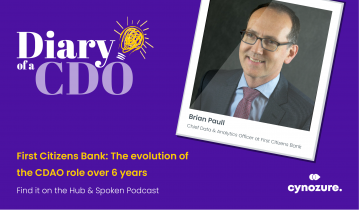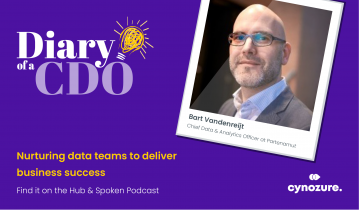Intro
Data is the most valuable resource available to businesses today. But how do you reap the benefits?. That’s where data analytics comes in. It is the process of examining large quantities of data to discover previously hidden insights and patterns within that data. Thanks to increasingly advanced technology (and AI of course!) it’s now easier than ever to analyse vast quantities of data in record time.
Through data analytics, you gain a valuable tool that can cut your business strategy (and data strategy) into shape, and track its progress and delivery.
It’s not just about big data
Big data has become a bit of a buzzword, and we don’t really think it’s relevant anymore. It’s just data. Big data has got so big, in so many organisations, calling it big…well… that’s not what’s so special about it. It’s what you do with it that counts. Luckily for us, advances in technology have kept pace with the explosion of data in recent years. With modern tools (such as Hadoop and Spark) it’s possible to process and analyse data with far greater efficiency than even just a few years ago.
It’s this ability to use data in a quick way (and rapidly implement a strategy based on its insights), that gives businesses a competitive edge – through creating agility and helping to drive digital transformation.
The rise of data-driven organisations such as Airbnb, Netflix and Spotify highlight just how powerful data is. Thanks to data, Netflix has upended the traditional film rental market (bye bye Blockbuster…), Spotify fundamentally changed how musicians sell their music, and Airbnb swooped in to take over travel accommodation. The changes that taking a data-driven approach to your business could cause, might be as dramatic as Netflix v Blockbuster.
How data analysis helps an organisation
Tailored marketing: Data analytics can help organisations in many different ways. Its impact stretches across industries, organisations and departments. Through analysing transactional and marketing data, you can create more tailored experiences, such as product recommendations, that really resonate with its customers. Feedback from those experiences can be used to further refine data models and provide even more precise suggestions. Spotify and Amazon broadly work in this way.
Providing more targeted marketing that delivers more return on investment is increasingly important in a crowded space where many businesses jostle for customer attention. But perhaps even more so in the third sector where marketing budgets are more restricted and marketers have to prove even more impressive results to senior stakeholders.
Product testing and development: Data can also be used to test new products without the hassle and expense of full market research and testing. Whilst we’re on the topic, you can also use data to predict new products and services you should be offering. Anything from social media data, through to sales data can be used to determine how popular a product will be and how best to market it.
Looking at how a product sells over time, a business could also predict demand at different periods – like in the run-up to the summer holidays. This will help make a supply chain ultra-efficient. By doing this, a retail business, for instance, can prevent its stores from running out of stock in critical periods, which doesn’t just impact its bottom line but also annoys its customers (who may high-tail it over to a competitor).
Risk management and fraud detection: Analysing data also helps businesses with assessing risk and preventing fraud. Financial institutions now use data models to help with mortgage or loan applications. Plus, every time you use a credit card, there’s a ton of data being processed in the background to determine whether you should be the person using it.
Looking through some of these examples, you might be able to see that each helps with one of three main areas:
- Reducing cost
- Leading to faster, more informed decision making
- Creating new products or services
These are the main ways that businesses gain value from data, at least according to the SAS report: Big Data in Big Companies.
Through more targeted marketing, businesses can ultimately reduce their marketing costs and drive higher return on investment (ROI). Similarly, the insights gained from marketing data can be used to create a much more effective marketing strategy. Some of those insights might then lead to the creation of a new product, as information from sentiment analysis on customer call centre data, or trends from social media, uncover a lucrative gap in the market.
Data analytics is a fast-growing area, with over half of CEOs admitting to using it to increase cost efficiency and refine processes. 51% use it in product development, 49% to uncover new customers, 46% to manage risk and 44% to understand existing customer needs and behaviour. And for good reason! Research from Forrester predicts that businesses that use data will grow faster than the projected GDP growth of 3.5% – at 27% for public companies and a whopping 40% for startups. Businesses with a data-driven approach also retain more customers, which translates into them being 60% more profitable than their less data-savvy competitors, according to Deloitte.
Some challenges in data analysis
Now, it’s not all sunshine and smooth sailing. There are some potential pitfalls that businesses need to avoid in order to make the most of data analysis.
Data quality: Notably, data analysis is only as good as the data it receives. When collecting and cleaning data, a lot of attention should be paid to its quality. Incorrect data leads to incorrect results – and that can affect any decisions you make off the back of it.
Consent: Before you carry out any kind of data analysis on personal data, you need to make sure you get the right consent from the individual it relates to. Under GDPR, there cannot be blanket consent to cover every type of data analysis, but instead, it needs to be given for each and every type of analysis used. There’s a hefty fine involved (€20 million or 4% of global revenue, whichever is more) if you fail to do this.
Acting on insights: Data analysis can also be stumped by a lack of action on the insights it uncovers. The information gained through data analysis is most effective when acted on immediately. It also has a sell-by date. Insights from 2015 aren’t going to be relevant to a 2018 business strategy, for instance.
Now to summarise…
There’s a great deal of value to be uncovered through data analytics, and many businesses have already taken advantage of it. Thanks to current technology, it’s now easier than ever to analyse data, for all organisations, no matter their size or sector.
The amount of data businesses have available to analyse has grown a lot in recent years, and it’s only going to get bigger thanks to smart home technology like Amazon Alexa, and the increasing amount of time we’re spending online. Everything we do creates data, and businesses are producing it 24/7.
Data analysis is how businesses make use of all the data collected, and, most importantly, act on the insights that it uncovers. Data analytics can take your business from the mass market to creating a market just for itself. It’s the secret weapon for many leading businesses today. So make it yours.








